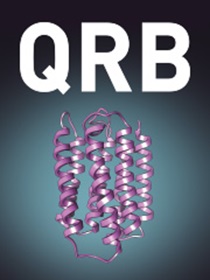内皮表层的结构和功能:揭示生物表面的纳米结构
IF 5.3
2区 生物学
Q1 BIOPHYSICS
引用次数: 22
摘要
在现代生物学未解之谜中,被称为“内皮表面层”(ESL)的血管内膜的性质是什么。在静脉微血管中,它的厚度为半微米。ESL的底部比内皮糖萼(eGC)厚10倍,据推测主要由水组成,但其硬度足以排除红细胞。这怎么可能呢?物理化学的发展表明,静脉ESL实际上是由组织代谢产生的二氧化碳纳米泡组成的,在eGC中形成有核的泡沫。对于动脉来说,ESL主要由吸入空气中的O2和N2纳米气泡组成。泡沫的气泡被血清电解质和蛋白质的薄层以及eGC的带电聚合物链的栅栏分离和稳定。ESL似乎是一个呼吸器官,与流动的血液相连,是一个微型的“肺”的延伸。这种解释可能对生理学产生深远的影响。本文章由计算机程序翻译,如有差异,请以英文原文为准。
Structure and function of the endothelial surface layer: unraveling the nanoarchitecture of biological surfaces
Abstract Among the unsolved mysteries of modern biology is the nature of a lining of blood vessels called the ‘endothelial surface layer’ or ESL. In venous micro-vessels, it is half a micron in thickness. The ESL is 10 times thicker than the endothelial glycocalyx (eGC) at its base, has been presumed to be comprised mainly of water, yet is rigid enough to exclude red blood cells. How is this possible? Developments in physical chemistry suggest that the venous ESL is actually comprised of nanobubbles of CO2, generated from tissue metabolism, in a foam nucleated in the eGC. For arteries, the ESL is dominated by nanobubbles of O2 and N2 from inspired air. The bubbles of the foam are separated and stabilized by thin layers of serum electrolyte and proteins, and a palisade of charged polymer strands of the eGC. The ESL seems to be a respiratory organ contiguous with the flowing blood, an extension of, and a ‘lung’ in miniature. This interpretation may have far-reaching consequences for physiology.
求助全文
通过发布文献求助,成功后即可免费获取论文全文。
去求助
来源期刊

Quarterly Reviews of Biophysics
生物-生物物理
CiteScore
12.90
自引率
1.60%
发文量
16
期刊介绍:
Quarterly Reviews of Biophysics covers the field of experimental and computational biophysics. Experimental biophysics span across different physics-based measurements such as optical microscopy, super-resolution imaging, electron microscopy, X-ray and neutron diffraction, spectroscopy, calorimetry, thermodynamics and their integrated uses. Computational biophysics includes theory, simulations, bioinformatics and system analysis. These biophysical methodologies are used to discover the structure, function and physiology of biological systems in varying complexities from cells, organelles, membranes, protein-nucleic acid complexes, molecular machines to molecules. The majority of reviews published are invited from authors who have made significant contributions to the field, who give critical, readable and sometimes controversial accounts of recent progress and problems in their specialty. The journal has long-standing, worldwide reputation, demonstrated by its high ranking in the ISI Science Citation Index, as a forum for general and specialized communication between biophysicists working in different areas. Thematic issues are occasionally published.
 求助内容:
求助内容: 应助结果提醒方式:
应助结果提醒方式:


